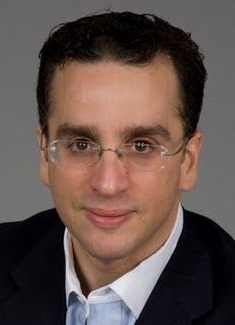Viewpoint: Addressing the rise of pharmaceutical fraud
Phil Taylor, 19-Aug-2011
 There is a growing threat to public health that has arisen around the sale of counterfeit pharmaceuticals. This threat to public health does not limit itself to back alleys and the seedy underworld; it finds its way into our homes through our internet browsers and into our communities through a sophisticated distribution system.
There is a growing threat to public health that has arisen around the sale of counterfeit pharmaceuticals. This threat to public health does not limit itself to back alleys and the seedy underworld; it finds its way into our homes through our internet browsers and into our communities through a sophisticated distribution system.
The risk of this to human health cannot be overstated. The US Center for Medicine in the Public Interest estimates that 15 per cent of medicines sold worldwide are fake, killing around 700,000 people a year. Unfortunately, there are no signs that the criminals associated with pharmaceutical fraud are slowing down.
In developed economies consumers have become largely complacent in the face of the threat posed by the pharmaceutical black market. Strong regulation and a tightly controlled distribution chain have removed any notion of caution from consumers when it comes to the medicines they consume. This environment, however, is changing rapidly. Consumers now know about the drug treatments they want and the brands available for those treatments than ever before. That knowledge and awareness is driven by two main factors:
Demand for lifestyle drugs: The pharmaceutical industry has made enormous progress in recent years toward extending our expectation of pharmaceuticals: we do not just look to pharmaceuticals to heal us when we are sick, we also expect drugs to improve the quality of our lives. This expectation is evidenced by the phenomenal success of lifestyle drugs treating conditions such as baldness, impotence, wrinkles or acne in recent years.
Demand for specific brands: Heavy, direct-to-consumer advertising by drug companies has raised customer awareness of and demand for drugs; we buy Viagra and not erectile dysfunction medication. Consumer awareness of specific brands imparts tremendous market power and value to a favored and recognised name.
Consumer preference for specific remedies and specific brands has not escaped the attention of counterfeiters. Beyond a powerful profit motive, the fraudster is also better positioned than ever to supply counterfeit, diverted or tampered pharmaceuticals to the unwitting consumer. This is enabled by the use of more sophisticated imaging and printing technologies providing criminals with tools for creating sophisticated counterfeit packaging and labels. The Internet, meanwhile, offers fraudsters a cheap, global and anonymous platform for promoting and distributing counterfeit goods.
These factors contribute to lower profits and undermine brand integrity of major pharmaceutical firms. They also jeopardise the health and safety of millions who rely on authentic drugs for their well being and quality of life.
Safeguarding pharmaceuticals
Drug companies and regulatory agencies can work together to establish a common framework that addresses the demand side of the fraud problem by empowering consumers to recognise fake drugs when they see them while giving brand owners the tools to police their supply chain. Each constituency has unique requirements that can be matched to available technologies.
Overt technologies for consumers: Overt authentication technologies are designed to be easily recognisable to the public and difficult to replicate by counterfeiters. They deliver unique visual features that a consumer can validate in a point of sale environment without the use of complicated readers or technology. Examples of this technology include the three dimensional holographic dove on Visa credit cards and the color changing numbers on the American $100 bill.
Covert and Tracking Technologies for Brand Owners: Covert authentication and product tracking technologies allow a trained investigator in the field to authenticate a product using a tool. They include hidden features that can only be detected with commercially-available microscopes or specialised readers. They can also include serialisation schemes that can track a particular product through the supply chain via a bar code or RFID tag to make sure that it has passed through appropriate channels on its way to the consumer.
The counterfeiting of pharmaceuticals is a serious, expensive problem and powerful drivers incenting fraudsters will only add to the scope and pervasiveness of this problem in the future. Authentication strategies tailored to the consumer and the supply chain are available and followed by many leading brand owners.
While more brand owners should consider adopting similar strategies, perhaps the best course of action is for consumers themselves to recognise the scope of the problem and empower themselves to do something about it.

Adam Scheer
Senior Director
Business Development and Strategic Market,
Advanced Optical Technologies group of JDSU
Do you have an opinion on the topic of pharmaceutical counterfeiting and supply chain security you'd like to share with the readers of SecuringPharma.com? If so, don't hesitate to contact the editor on newsdesk@securingpharma.com. Please put the world 'Viewpoint' in the subject line of your message.

©
SecuringIndustry.com




 There is a growing threat to public health that has arisen around the sale of counterfeit pharmaceuticals. This threat to public health does not limit itself to back alleys and the seedy underworld; it finds its way into our homes through our internet browsers and into our communities through a sophisticated distribution system.
There is a growing threat to public health that has arisen around the sale of counterfeit pharmaceuticals. This threat to public health does not limit itself to back alleys and the seedy underworld; it finds its way into our homes through our internet browsers and into our communities through a sophisticated distribution system. 
